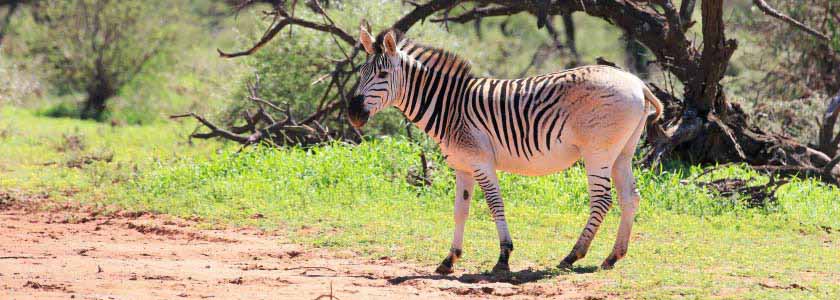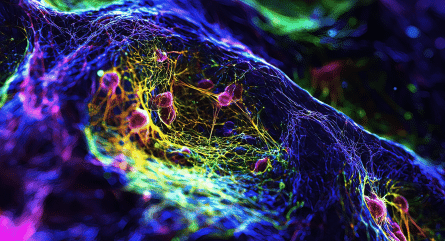The Dutch settlement of South Africa began in March 1647 after the shipwreck of the Nieuwe Haarlem, whose survivors built a fort and waited for a year before being rescued. At home in Holland, some of the shipwrecked crew lobbied the Dutch East India Company to open a trading center back where they had spent their shipwrecked year, and the company agreed. The effort led to the creation of Cape Town, which today reigns as one of the world’s most beautiful cities.
In Cape Town, Dutch farmers planted crops that helped supply ships making the passage around the Cape of Good Hope. Settlers, who called themselves Boer, moved inland, where they encountered Africa’s wild and wonderful animals, some of which were mysterious, some of which were dangerous, and some of which were annoying. Of those that fell under the annoying category, one which stood out was the quagga.
What was a Quagga and are they Exinct?
Typically 8 feet long and 4 feet high, quaggas had brown and white striping similar to zebras on their front but looked like horses on their back halves. They were said to be lively and strong, and many were taken to London, where they were employed as carriage pullers. Wild quagga grazed on plains and congregated in groups of 30-50 around the Orange River, a major waterway that rises in Lesotho’s highlands and flows west to form South Africa’s border with Namibia. As they roamed the plains of central South Africa, they grazed on the same grasses that Boer livestock favored. To reduce competition and supply meat, settlers heavily hunted the quaggas, and by 1878 the quaggas were extinct in the wild. The final survivor died in a zoo in Amsterdam in 1883, and only one, resident of a London zoo, was ever photographed: pictures show it standing on a brick floor, surrounded by metal gates.
Quagga taxonomy has proven difficult. The name “quagga” is an onomatopoeia for the sound zebras make and was often given to any animal that looked like a zebra. Early distinction was based on striping, but some differences were later attributed to individual variation. Researchers eventually settled on Equus quagga quagga, lumping the animal in with horses and donkeys. Today, you can see stuffed quagga in museums in places like Amsterdam, Lyon, and Pretoria, as well as one in Berlin’s Natural History Museum.It’s that one in Berlin that is very, very special, because that stuffed animal harbored the remains scientists used to create the world’s first DNA analysis of an extinct animal.
Difference Between a Quagga and Zebra
Although DNA sampling of things long dead is now fairly common, the analysis of Berlin’s E. quagga quagga was an extraordinary feat in 1984. As described in Nature, researchers examined dried muscle from the museum specimen and extracted 1% of the DNA, finding it had low molecular weight. A total of 229 nucleotide pairs were taken, and findings revealed that the quagga was 12 base substitutions away from the mountain zebra, E. zebra.
“The number, nature and locations of the substitutions imply that there has been little or no postmortem modification of the quagga DNA sequences, and that the two species had a common ancestor 3–4 million years ago, consistent with fossil evidence concerning the age of the genus Equus,” researchers wrote.
Subsequent DNA studies found the quagga to be closely related to plains zebra, with one 1987 study finding that the quagga’s mitochondrial DNA diverged at just 2% per million years. A genetic study from 2005 showed the animal had little genetic diversity and that it diverged from the plains subspecies as little as 120,000 years ago. That distinct coat? It could have been due to geographic isolation or adaptation to drier environments. The most recent study has found that quaggas had more in common genetically with their southern zebra neighbors than those to the north, with those from Namibia being the closest genetically.
That could have been it for the quagga, except the story of its genetic heritage is still being written. That’s because cousins of the quagga are again roaming the plains of Africa.
The Quagga Project
Quagga’s similarity to the plains zebra won the attention of Reinhold Rau, a German who eventually settled in South Africa and remounted a museum quagga and collected samples of dried tissue from the animal’s skin, which became the basis of the original DNA analysis. Rau went on to form the Quagga Project.
The Quagga Project was borne from breeding experiments conducted by two German brothers and an Austrian zoo director. The 1955 book by Lutz Heck, “Grosswild im Etoshaland,” suggested that careful selection and breeding of the plains zebra could produce an animal identical to the quagga. Rau’s project received generally negative reception at first, especially among those who saw the quagga as genetically distinct from the zebra. In 1987, 9 zebras were selected from a herd in a national park in Namibia and placed in a specially constructed breeding camp near Robertson, South Africa, and since then, breeding has focused on what the project calls “suitable offspring.”
“It is expected that this continuous selective breeding will, with successive generations, reduce the high degree of individual variation, both in color and in extent of striping, which are characteristics of the southern Plains Zebra,” the project states. “Eventually individuals should emerge whose coat-pattern characters closely resemble that of the extinct Quagga.”
The breeding program now has dozens of carefully selected offspring in locations around the Cape Peninsula, with a list of studs. Criticism of the project is consistent but muted and remains focused on findings that quagga were a separate species and not just browner, less-stripey zebras. The Quagga Project, however, is plugging along, with current offspring looking remarkably like the extinct species, and plans still calling for selective breeding, not cloning.
“Selective breeding, aiming at retrieving Quagga genes, believed to be still present in living Plains Zebra populations, might eventually result in individuals which have at least the exterior characteristics of the extinct Quagga,” the project states. “Could the Quagga be cloned from old Quagga tissue? No; for cloning, live cells are needed. The only genetic material of the Quagga available are portions of mitochondrial DNA.”
If you want to see a quagga in a museum, the Quagga Project maintains a list of specimens. For current updates on breeding, see the group’s Facebook page.


























